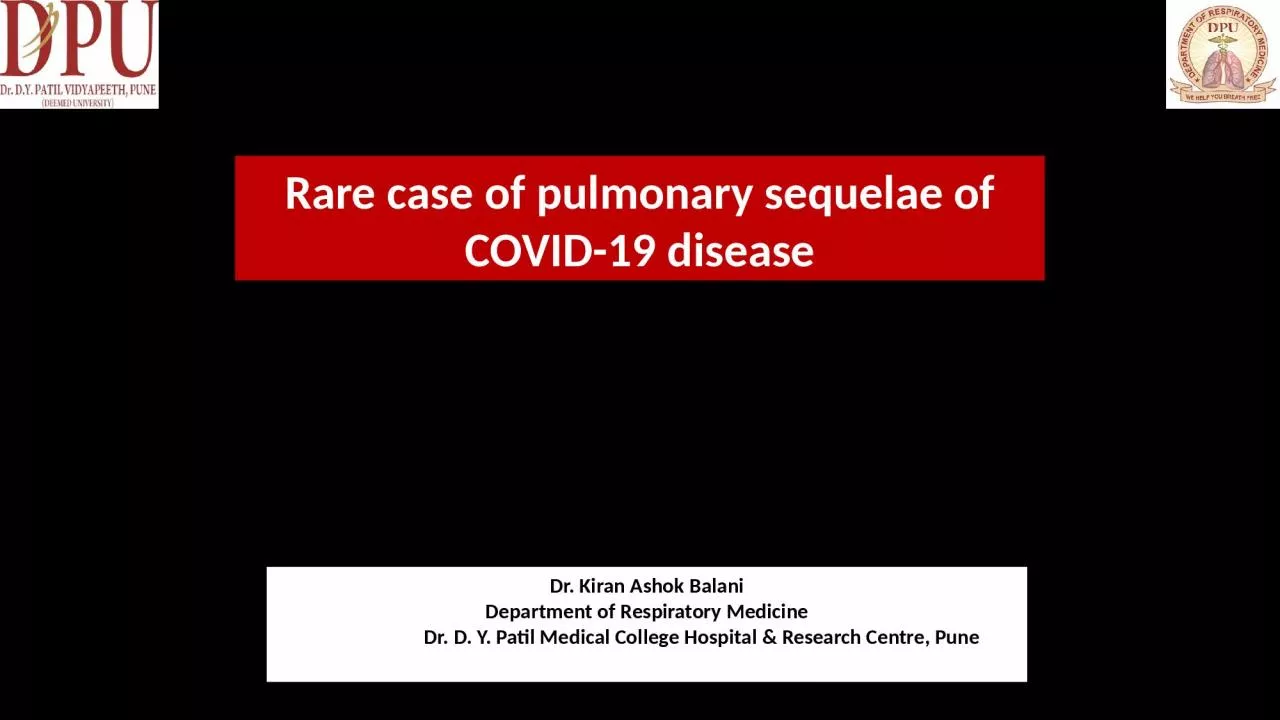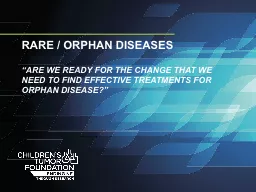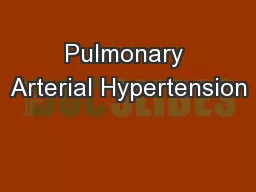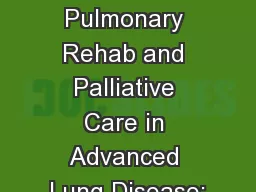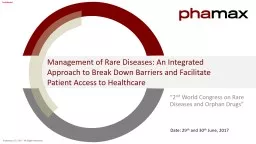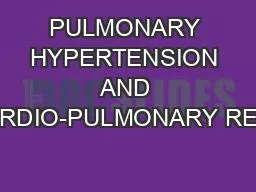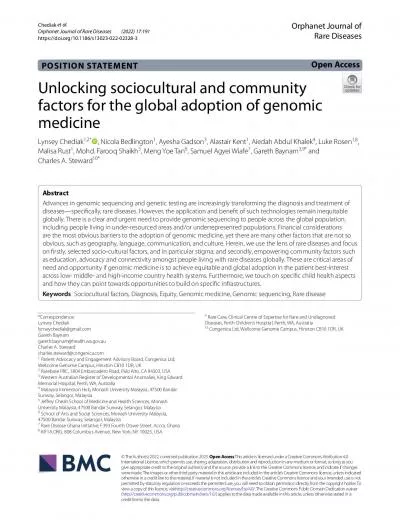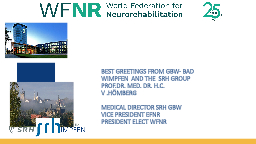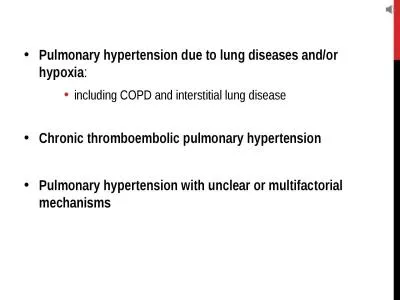PPT-Rare case of pulmonary sequelae of COVID-19 disease
Author : vivian | Published Date : 2022-06-07
Dr Kiran Ashok Balani Department of Respiratory Medicine Dr D Y Patil Medical College Hospital amp Research Centre Pune Chief complaints Breathlessness Cough
Presentation Embed Code
Download Presentation
Download Presentation The PPT/PDF document "Rare case of pulmonary sequelae of COVID..." is the property of its rightful owner. Permission is granted to download and print the materials on this website for personal, non-commercial use only, and to display it on your personal computer provided you do not modify the materials and that you retain all copyright notices contained in the materials. By downloading content from our website, you accept the terms of this agreement.
Rare case of pulmonary sequelae of COVID-19 disease: Transcript
Download Rules Of Document
"Rare case of pulmonary sequelae of COVID-19 disease"The content belongs to its owner. You may download and print it for personal use, without modification, and keep all copyright notices. By downloading, you agree to these terms.
Related Documents

